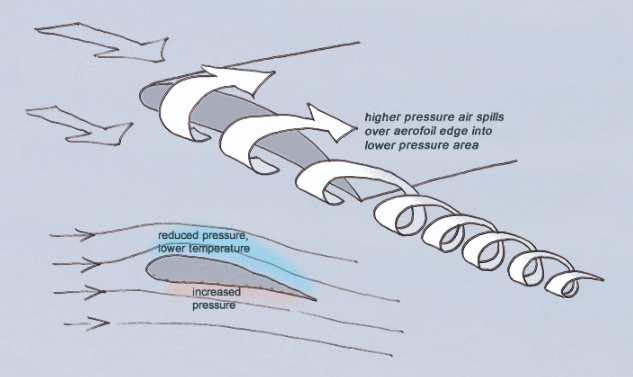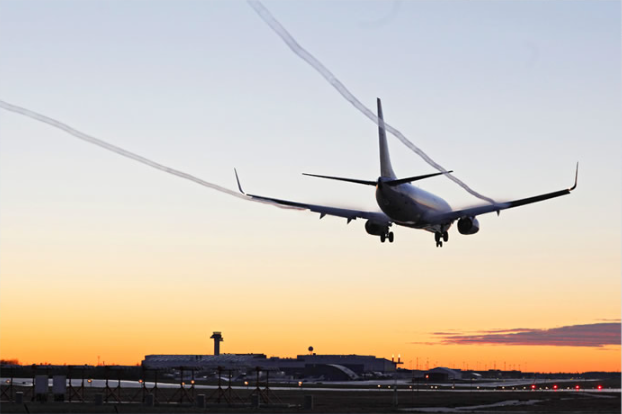Aircraft tip vortices - OPOD
Aircraft Tip Vortices - OPOD: Exploring the Mystical Trails
Have you ever witnessed the enchanting sight of an aircraft leaving behind mesmerizing trails as it descends into an airport? Those captivating rings that seem to appear and vanish like magic are not mere rings but rather long helical trails known as vortices. In this article, we will delve into the captivating world of aircraft tip vortices and explore their formation, characteristics, and the factors that influence their visibility.
Formation of Vortices
The formation of aircraft tip vortices is a fascinating phenomenon rooted in the principles of fluid dynamics. As an aircraft moves through the air, the air beneath its wings experiences higher pressure compared to the air above. At the wing's edge, this high-pressure air spills from the lower region and gracefully curls upwards into the region above the surface.
Over time, this swirling motion of air gives birth to a tip vortex, which trails behind the aircraft in a long backward spiral. These vortices are particularly pronounced during critical flight phases such as takeoff and landing when high lift demands are present. The ends of leading edge slats or rear flaps act as primary sources for the formation of these vortices. However, the inclusion of winglets helps to mitigate the intensity of tip vortices originating from the main wing.
The Visual Manifestation
Under normal circumstances, these vortices exist even if they are not readily visible to the naked eye. However, in certain atmospheric conditions, such as high humidity, these ethereal trails become visible to observers on the ground. The high moisture content in the air causes rapid condensation of water vapor into small droplets, creating a mist-like appearance along the length of the vortex trail.
It is worth noting that the visibility of these condensed droplets depends on their rate of expansion and condensation. In some instances, when the condensation occurs rapidly, the droplets may exhibit a captivating phenomenon known as iridescence, displaying vibrant colors as light interacts with the condensed moisture.
Exploring the Helical Structure
The helical structure observed within the aircraft tip vortices adds another layer of intrigue to this captivating atmospheric phenomenon. As the vortices trail behind the aircraft, they twist and spiral in a helical fashion, creating a mesmerizing visual effect. This helical structure is a result of the complex interactions between the airflow patterns and the forces acting upon the vortices.
To truly appreciate the beauty of these helical trails, we recommend watching the captivating video captured by Peter Rosén, which showcases the landing aircraft and its mesmerizing vortex trails in all their glory.
Further Insights
While we have explored the formation and visual characteristics of aircraft tip vortices, there is much more to learn about this captivating atmospheric phenomenon. Researchers and aviation experts continually study vortices to better understand their behavior and mitigate their potential effects on aircraft operations. Here are a few additional points to consider:
- Vortices are strongest during takeoff and landing due to the high lift demands placed on the aircraft.
- The inclusion of winglets helps reduce the intensity of tip vortices originating from the main wing.
- Vortices can pose a potential hazard to following aircraft, as they can induce turbulence and affect their stability.
- Pilots and air traffic controllers take precautions to ensure safe separation between aircraft to minimize the risk associated with these vortices.
- The study of vortices has led to advancements in aviation design, including innovative wing configurations and technologies aimed at reducing their impact.
- Atmospheric conditions, such as temperature, humidity, and wind speed, can influence the behavior and visibility of vortices.
In conclusion, aircraft tip vortices are not merely fleeting rings but rather intricate helical trails that grace our skies during critical flight phases. The interplay between air pressure, fluid dynamics, and atmospheric conditions gives birth to these mesmerizing phenomena. The next time you witness an aircraft descending into an airport, take a moment to appreciate the hidden beauty within its trailing vortices, as they provide a glimpse into the captivating world of atmospheric optics.

Vortices ~ Dusk at Arlanda Airport, Stockholm, Sweden. Very humid with fog appearing and then dissipating. A landing aircraft leaves streams of what appear to be rings. They are actually long helical trails – vortices - of condensed moisture.
Images and video by Peter Rosén
All images ©Peter Rosén, shown with permission

Vortex formation
Air beneath an aerofoil is at a higher pressure than that above it. At an edge the high pressure air spills from the lower region and curls upwards into the region above the surface.
The swirling air eventually leaves the aerofoil as a tip vortex that forms a long backwards trail.
Vortices are strongest under the high lift demands of landing and take-off. Ends of leading edge slats or rear flaps are sources. Winglets reduce tip vortices from the main wing.
The trails always exist. High humidity made them visible here. Rapid expansion of the humid air caused moisture condensation into small droplets visible as a mist. Note the mist also around upper wing areas. Rapidly condensed droplets like these sometimes show strong iridescence.

See Peter Rosén's video of the landing.


Helical structure in the trail
Note: this article has been automatically converted from the old site and may not appear as intended. You can find the original article here.
Reference Atmospheric Optics
If you use any of the definitions, information, or data presented on Atmospheric Optics, please copy the link or reference below to properly credit us as the reference source. Thank you!
-
<a href="https://atoptics.co.uk/blog/aircraft-tip-vortices-opod/">Aircraft tip vortices - OPOD</a>
-
"Aircraft tip vortices - OPOD". Atmospheric Optics. Accessed on November 26, 2024. https://atoptics.co.uk/blog/aircraft-tip-vortices-opod/.
-
"Aircraft tip vortices - OPOD". Atmospheric Optics, https://atoptics.co.uk/blog/aircraft-tip-vortices-opod/. Accessed 26 November, 2024
-
Aircraft tip vortices - OPOD. Atmospheric Optics. Retrieved from https://atoptics.co.uk/blog/aircraft-tip-vortices-opod/.